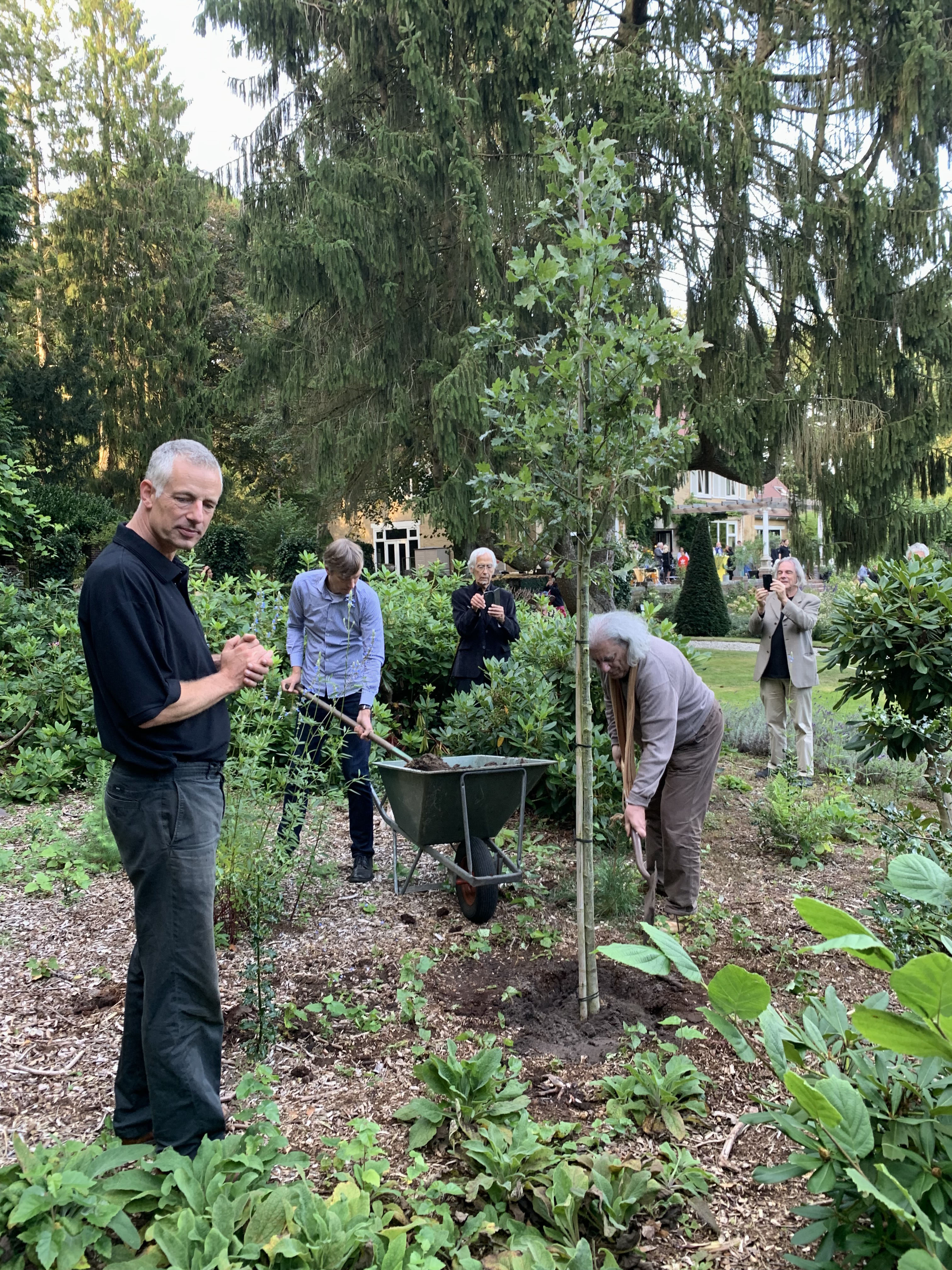| LANDGOED NARDINCLANT-AMSTERDAM GARDEN, Houtweg 25, 1251 CS Laren,
13 September -24 October 2021
exhibition, meeting, happening, guided tours 12.00-16.00 p.m.
At Landgoed Nardinclant-Amsterdamgarden the first activity of the new project On Friendship / (Collateral Damage) IV- How to Explain Hare Hunting to a Dead German Artist [The usefulness of continuous measurement of the distance between Nostalgia and Melancholia] took place. At the first art exhibition Nature and Aesthetics' Redefined' of the Landgoed Nardinclant the perspective was the relationship between humans, nature and aesthetics.
Exhibition
Joseph Sassoon Semah From the diary of the architect 2021 (Reference presentation Joseph Beuys, '7000 Eichen' (documenta 7, Kassel, 1982).
(Ref: Joshua 24(26) 'And Joshua recorded these things in the Book of Law of God. Then he took a large stone and set it up there under the oak near the holy place of the Lord.')
A temporary MaKOM in MaKOM (place/house) was installed as a symbol for GaLUT (Exile).
Happening
Joseph Beuys planted 7000 oaks through the city of Kassel, each paired with a stone. The project was seen as a gesture towards green urban renewal. In Landgoed Nardinclant Joseph Sassoon Semah planted an oak from Jerusalem and showed the sources of this work.

Lecture
Curator Roel Arkesteijn: Art and Ecology. Expanding the concept of Joseph Beuys' 7000 Eichen
Since the late 1960's and early 1970's, many visual artists developed artistic strategies to re-claim, re-purpose and re-develop territories which had been degraded by industrial use or otherwise inappropriate human activities; to foster ecological change; or to otherwise employ inventive methodologies to physically transform local ecologies. Where as few of them are still widely recognized today, such as Robert Smithson and Joseph Beuys, many of these artists are still largely unknown to a wider visual art audience or have nowadays even fallen into oblivion.
Departing from his practice as a museum curator who has showcased many of these ecologically and socio-politically engaged artists, in his lecture Roel Arkesteijn contextualized and tried to shed new light on Joseph Beuys' project 7000 Eichen in Kassel, Germany. Introducing some of the Biblical, literary and visual artistic sources of 7000 Eichen, Arkesteijn gave also reference to Joseph Sassoon Semah's interpretations of this German artist.
|

A temporary MaKOM in MaKOM [The Doubling of the House] 2021
Cellular concrete blocks, wood, white paint, cement, 200 x 200 x 600 cm
Courtesy of Nardinclant-Amsterdamgarden |


